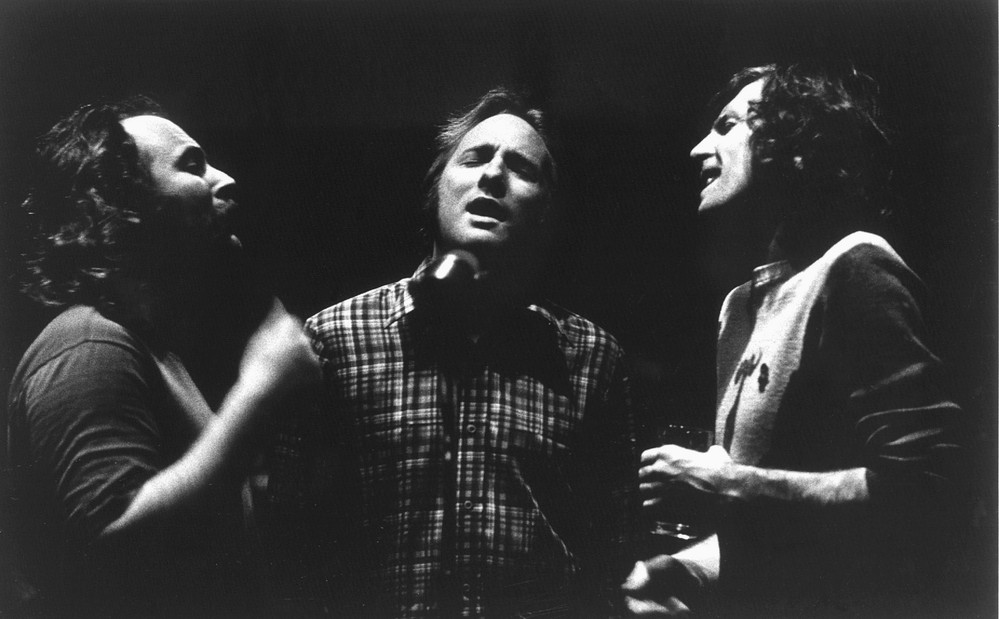The iconic American-Canadian folk rock supergroup, Crosby, Stills & Nash (and sometimes Young), has left an indelible mark on the music world. With a career spanning over five decades, their discography is a treasure trove of timeless classics, poignant ballads, and socially conscious anthems. In this comprehensive guide, we’ll delve into the band’s extensive catalog, exploring their studio albums, live recordings, compilations, and solo endeavors.
Studio Albums
- Crosby, Stills & Nash (1969) - The self-titled debut album introduced the world to the trio’s harmonious blend of folk, rock, and psychedelia. Featuring classics like “Suite: Judy Blue Eyes” and “Guinnevere,” this album set the stage for their future success.
- Déjà Vu (1970) - With the addition of Neil Young, the band expanded their sound, incorporating country and hard rock elements. This album includes iconic tracks like “Wooden Ships,” “Teach Your Children,” and “Almost Cut My Hair.”
- CSN (1977) - After a seven-year hiatus, the trio reunited, releasing an album that showcased their growth and maturity. Standouts include “Just a Song Before I Go” and “Fair Game.”
- Daylight Again (1982) - This album marked a creative resurgence for the band, with hits like “Wasted on the Way” and “Southern Cross.”
- American Dream (1988) - With Young’s return, the band released an album that tackled social and environmental issues, featuring songs like “American Dream” and “Got It Made.”
- Live It Up (1990) - A more experimental effort, this album incorporated electronic elements and featured collaborations with other artists.
- After the Storm (1994) - The band’s final studio album with the classic lineup, it includes tracks like “Only Waiting” and “Camera.”
Live Albums
- 4 Way Street (1971) - A double album capturing the band’s live performances during their 1970 tour, featuring extended versions of their hits and poignant acoustic renditions.
- Allies (1983) - Recorded during their 1982 tour, this album showcases the band’s live energy and features a mix of old and new material.
- Acoustic (1994) - A stripped-down, intimate recording of their acoustic performances, highlighting the band’s harmonious vocals and storyteller abilities.
- Looking Forward (1999) - A live album featuring performances from their 1999 tour, with a mix of classic tracks and newer material.
Compilations
- So Far (1974) - A greatest hits collection that spans their early career, including tracks from their first two albums.
- Replay (1980) - A compilation that covers their 1970s output, featuring hits like “Just a Song Before I Go” and “Fair Game.”
- Carry On (1991) - A four-disc box set that comprehensively covers the band’s career, including rare tracks, demos, and live recordings.
- Greatest Hits (2005) - A concise, single-disc collection of their most popular songs.
Solo Endeavors
- David Crosby:
- If I Could Only Remember My Name (1971) - A critically acclaimed solo debut, featuring guest appearances by members of the Grateful Dead and Jefferson Airplane.
- Oh Yes I Can (1989) - A comeback album of sorts, with Crosby re-emerging as a solo artist after a period of personal struggles.
- Stephen Stills:
- Stephen Stills (1970) - A solo debut that explored Latin and blues influences, featuring the hit single “Love the One You’re With.”
- Stephen Stills 2 (1971) - A more introspective effort, with a focus on acoustic arrangements and poetic lyrics.
- Manassas (1972) - A collaborative project with Chris Hillman, featuring a mix of rock, country, and Latin music.
- Graham Nash:
- Songs for Beginners (1971) - A solo debut that tackled social and environmental issues, featuring the classic track “Chicago.”
- Wild Tales (1973) - A more experimental effort, incorporating electronic elements and featuring guest appearances by members of the Band.
- Neil Young:
- Everybody Knows This Is Nowhere (1969) - A solo debut with his backing band Crazy Horse, featuring the epic track “Down by the River.”
- After the Gold Rush (1970) - A critically acclaimed album that explored folk, rock, and country influences, featuring the classic track “Only Love Can Break Your Heart.”
As we explore the discography of Crosby, Stills & Nash, it becomes clear that their music has stood the test of time, with themes of social justice, environmental awareness, and personal freedom remaining as relevant today as they were during the band’s heyday. Whether you’re a longtime fan or just discovering their music, this guide provides a comprehensive roadmap to their extensive catalog, inviting you to immerse yourself in the beautiful, harmony-rich world of CSN.
What is the most iconic song by Crosby, Stills & Nash?
+One of the most iconic songs by Crosby, Stills & Nash is “Suite: Judy Blue Eyes,” which features intricate vocal harmonies and a hauntingly beautiful melody.
How did Neil Young’s involvement impact the band’s sound?
+Neil Young’s involvement added a new dimension to the band’s sound, incorporating country and hard rock elements, as evident in songs like “Wooden Ships” and “Almost Cut My Hair.”
What is the significance of the album Déjà Vu?
+Déjà Vu is significant not only for its iconic songs but also for marking a creative turning point for the band, as they expanded their sound and explored new themes and styles.
How did the band’s solo endeavors contribute to their overall legacy?
+The solo endeavors of David Crosby, Stephen Stills, Graham Nash, and Neil Young not only showcased their individual talents but also influenced the band’s overall sound and direction, contributing to their enduring legacy.
What is the best way to explore the discography of Crosby, Stills & Nash?
+The best way to explore the discography of Crosby, Stills & Nash is to start with their iconic albums, such as their self-titled debut and Déjà Vu, and then delve into their solo endeavors and live recordings, allowing you to appreciate the band’s growth and evolution over time.



